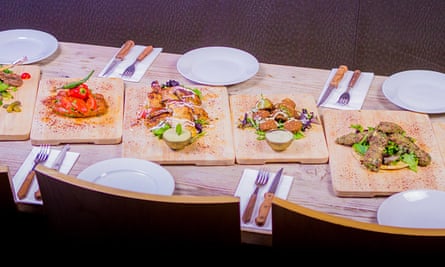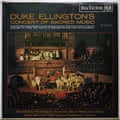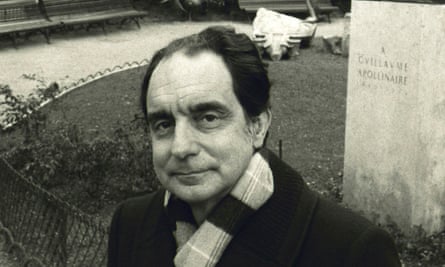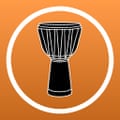Damon Albarn was born in east London in 1968. Interested in music from a young age, he studied at East 15 Acting School and then Goldsmiths, where he co-founded the band that helped kick off Britpop. As well as recording eight studio albums with Blur, Albarn also co-created Gorillaz and the Good, the Bad & the Queen, spearheaded the collaborative organisation Africa Express and has scored stage productions including Monkey: Journey to the West and Dr Dee. He lives in Notting Hill, west London, with his partner, Suzi Winstanley. On 12 November, Albarn releases his second solo album The Nearer the Fountain, More Pure the Stream Flows on Transgressive Records.
1. Film
Swan Song (dir Todd Stephens)

I just got back from Los Angeles, where I watched this amazing film in my hotel room. It’s about a midwest hairdresser, played by Udo Kier, whose life has been reduced to sitting in an old people’s home folding napkins. Then he gets a call from the lawyer of one of his society clients who is recently deceased, but in her will she wants him to give her a final makeover. I really love films that focus on small, obscure places and the details of people’s lives. I found this one very moving and I thought Kier’s performance was magical. I really recommend it.
2. Exhibition
The World of Stonehenge (the British Museum, London)

I’m really looking forward to this show [opens 17 Feb]. Ever since I did Dr Dee at the ENO, I’ve been obsessed with all things esoteric. And I drive past Stonehenge all the time on the A303 on the way down to Devon. Every time I go past it, it’s different – sometimes bigger, or smaller, or the stones are a different colour. So I’m fascinated to see what the British Museum has unearthed that I haven’t already seen or read about. I’m also delighted that the plans to build an underpass beneath Stonehenge have been abandoned. I don’t know how that possibly could be a good idea.
3. Restaurant

This is a Palestinian restaurant in Golborne Road, west London, with fantastic food and lovely people and it’s the only place I’ve found where they serve sage tea. Sage is incredibly good for cleaning the throat, so it’s very good for singers. I’ve been drinking it for years and years but I didn’t realise they drink it in Palestine. They allowed restaurants in Golborne Road to have outside seating during the pandemic, so that’s been a really nice development.

4. Music
Concert of Sacred Music by Duke Ellington
This record has such a fascinating form to it and it’s really inspired me recently. Duke Ellington claimed it wasn’t a mass, it was something new – I suppose a fusion between jazz and spirituality. But it’s very experimental and I like the idea that the older he got, the more experimental he got. It’s a fucking brilliant record. I don’t listen to a lot of jazz but I definitely enjoy it. I really love Thelonious Monk and Charlie Parker. The longer in the tooth I get, the more I gravitate towards Radio 3.
5. Books
The Baron in the Trees by Italo Calvino

This is a really interesting book about a child who decides to leave his family and live in the trees for the rest of his life. Maybe it’s a metaphor for individualism, I don’t know, but it’s a very weird book and I do like Calvino’s writing. I don’t generally read that much fiction. I could have chosen a hundred different nonfiction books, but this is one of the few novels I’ve stayed with recently. Calvino is a singular author. His book Invisible Cities had a big effect on me when I was younger.

6. App
This is a brilliant app. Djembe is the centrepiece drum of west African percussive ensembles and the app is a kind of almanac of classic, traditional rhythms; you can break down each rhythm and listen to all the different parts and work out how these polyrhythms fit together. It has notation as well and there’s also a bit of history about each rhythm. I used it when I was working on Le Vol du Boli at the Châtelet in Paris last year, with Fatoumata Diawara and Abderrahmane Sissako. I don’t have many apps, but this is one I really enjoy. If you’re into rhythm, it’s useful and fascinating.
7. Theatre
Fairview by Jackie Sibblies Drury (Young Vic, London)

This is the last thing I saw in the theatre that absolutely blew my mind. It’s a brilliant, Pulitzer-winning play and I think it needs to come back, so I’m recommending it in the hope that more people get to see it. It’s about an African American family who gather to celebrate their grandmother’s birthday and it’s just a very intelligent look at what it is to be [a person] of colour in American society. It’s so innovative in its staging: it repeats itself midway through, but the second time the actors are just mouthing the words. I really enjoyed it. I’m looking forward to working in theatre again. One of my favourite things is losing myself in a big project.
